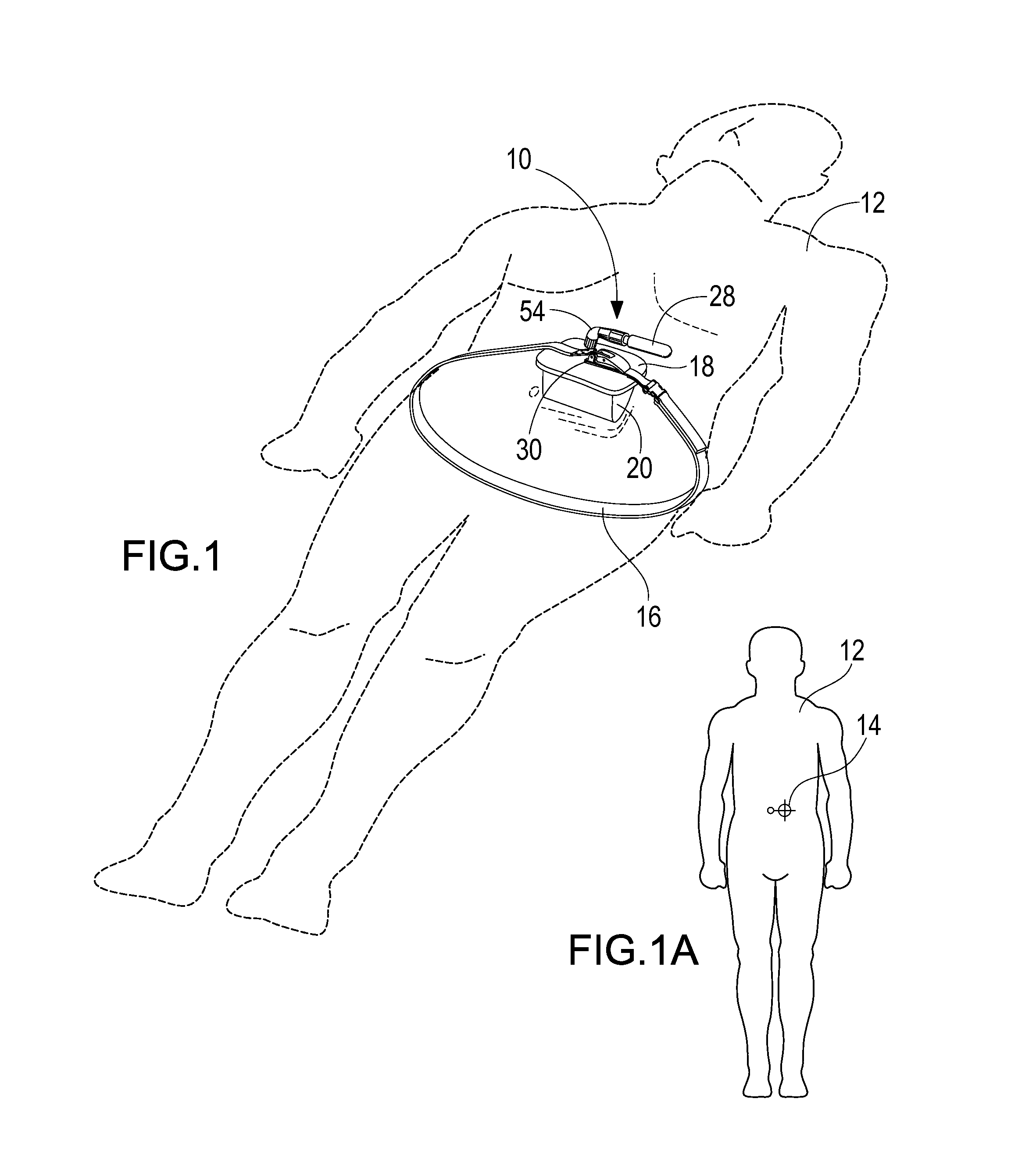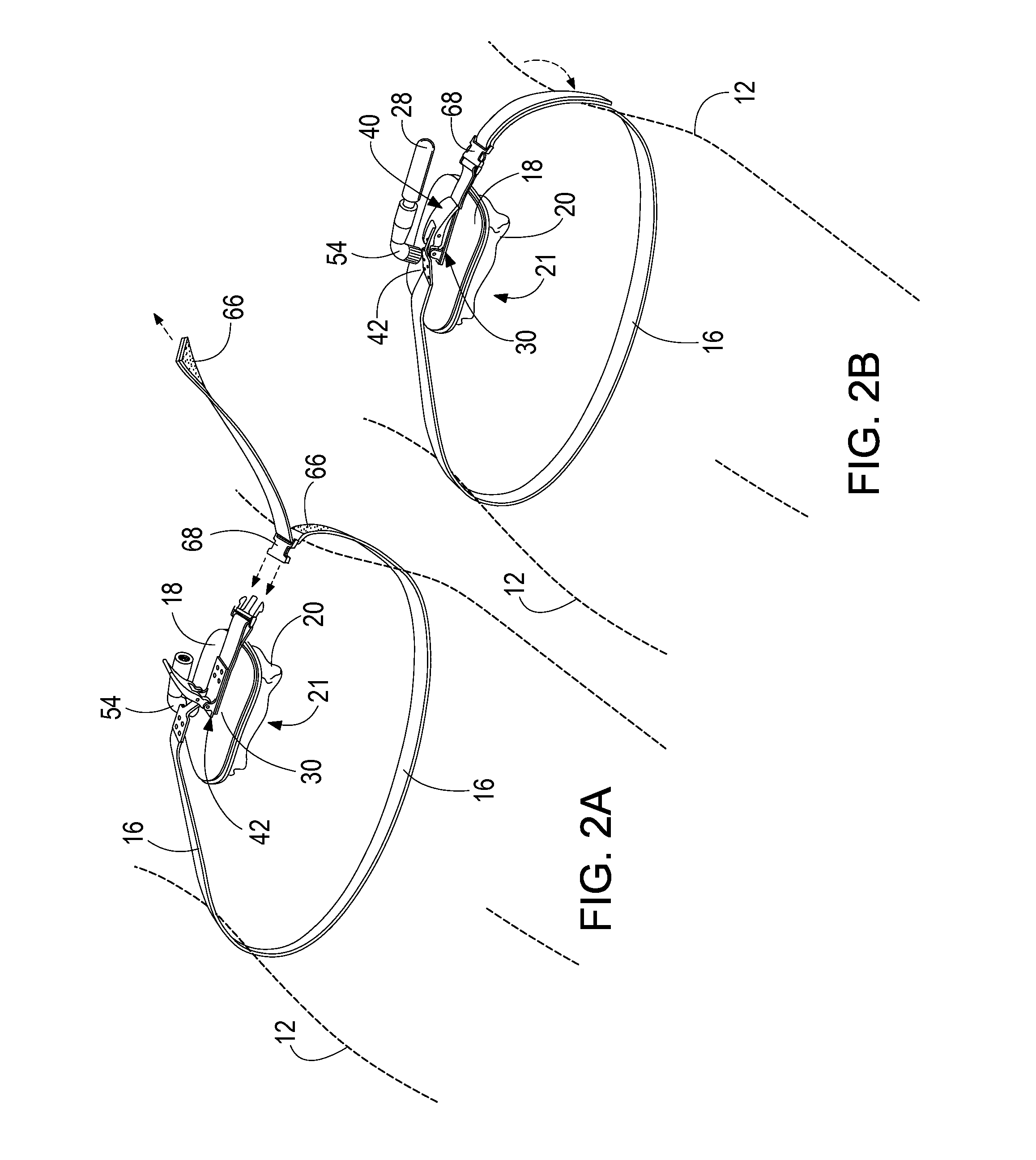Portable pneumatic abdominal aortic tourniquet with supplemental tensioning means
a technology of aortic tourniquet and supplemental tension, which is applied in the field of tourniquets, can solve the problems of difficult exercise of compressing the abdominal descending aorta, no complete success in cessation of hemorrhage from the major blood vessels of the body at or below the inguinal area, and lack of satisfactory compressible sites. to achieve the effect of facilitating effective aorta occlusion
- Summary
- Abstract
- Description
- Claims
- Application Information
AI Technical Summary
Benefits of technology
Problems solved by technology
Method used
Image
Examples
Embodiment Construction
[0030]Referring to the drawings for a better understanding of the function and structure of the invention, and starting with FIG. 1, a pneumatic abdominal aortic tourniquet, designated generally as 10, is shown secured around the lower abdomen of a person 12 for restricting blood flow through the descending aorta proximal to its bifurcation in the lower abdomen to deal with a non-compressible arterial hemorrhage. Referring to FIG. 1A, the tourniquet is arranged over the abdomen to apply localized pressure across a pressure point 14 to restrict blood flow in downstream hemorrhage locations from the point of application.
[0031]Referring to FIGS. 1 through 3, pneumatic abdominal aortic tourniquet 10 includes an adjustable waist strap 16 for securing the tourniquet around the abdomen of a patient 12. A rigid base plate 18 is carried on waist strap 16. Base plate 18 is constructed and arranged to have a width greater than waist strap 16 so that base plate 18 extends laterally outward from...
PUM
 Login to View More
Login to View More Abstract
Description
Claims
Application Information
 Login to View More
Login to View More - R&D
- Intellectual Property
- Life Sciences
- Materials
- Tech Scout
- Unparalleled Data Quality
- Higher Quality Content
- 60% Fewer Hallucinations
Browse by: Latest US Patents, China's latest patents, Technical Efficacy Thesaurus, Application Domain, Technology Topic, Popular Technical Reports.
© 2025 PatSnap. All rights reserved.Legal|Privacy policy|Modern Slavery Act Transparency Statement|Sitemap|About US| Contact US: help@patsnap.com



